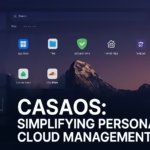Want to access your home network securely while traveling? Or simply protect your data while on public Wi-Fi? Setting up a VPN to your home network is a powerful way to achieve remote access, privacy, and enhanced security.
This guide will walk you through everything from basic concepts to full configuration, with multiple options depending on your tech setup. We’ve also optimized this content using data-backed keywords and SERP features to help you find exactly what you need — fast.
What Is a VPN and Why Use One for Your Home Network?
A VPN (Virtual Private Network) creates a secure, encrypted tunnel between your device and your home network. It helps:
- Access files, devices, and IoT systems remotely (like NAS or smart cameras)
- Encrypt your traffic when using public or untrusted Wi-Fi
- Browse privately and access content as if you’re home, even while abroad
Setting up a home VPN server gives you full control — no third-party logging, throttling, or data limits.
Methods to Set Up a VPN to Home Network
Method 1: Use a VPN-Compatible Router
Ideal for non-technical users who want a plug-and-play setup.
Modern routers from brands like ASUS, Netgear, and TP-Link offer built-in VPN server support.
Steps:
- Log in to your router’s web interface (usually
192.168.0.1or192.168.1.1) - Go to the VPN settings (ASUS: Advanced Settings > VPN Server)
- Enable OpenVPN or PPTP
- Download the configuration file
- Install the config on your client devices (Windows, macOS, iOS, Android)
Resource: ASUS VPN Setup Guide
Method 2: Use a Raspberry Pi as a VPN Server
Ideal for DIYers who want a cost-effective, lightweight home VPN.
Install PiVPN, a free and open-source tool that automates WireGuard or OpenVPN setup.
Steps:
- Flash Raspberry Pi OS
- Run:
curl -L https://install.pivpn.io | bash - Choose VPN type (WireGuard recommended)
- Set static IP or DDNS
- Add users and generate
.confor.ovpnfiles - Import into VPN client app
Resource: PiVPN Official Site
Method 3: Use a NAS Device with VPN Server Capability
Brands like Synology or QNAP support OpenVPN and L2TP/IPSec.
Setup Overview:
- Open Package Center
- Install VPN Server
- Enable desired protocol
- Configure DDNS & port forwarding
- Export config for client
Resource: Synology VPN Setup
Method 4: Install OpenVPN or WireGuard on a PC or Server
Ideal for home labs or users with always-on systems.
OpenVPN Setup:
- Install OpenVPN Access Server
- Run initial setup & define user credentials
- Port forward port 1194 on your router
- Download client or
.ovpnconfig
WireGuard Setup:
- Follow WireGuard installation for your OS
- Generate keys and config
- Port forward UDP 51820
Additional Configuration
1. Setup Dynamic DNS (DDNS)
Your ISP changes your home IP address periodically. A DDNS keeps a fixed hostname linked to your IP.
2. Configure Port Forwarding
Access to your VPN server from the internet requires opening a port.
- Login to router
- Find “Port Forwarding”
- Forward:
- 1194 for OpenVPN
- 51820 for WireGuard
- 1723 for PPTP (not recommended)
3. Install VPN Client on Devices
- Desktop: OpenVPN Connect / WireGuard Client
- Mobile: App Store / Play Store
- Import
.ovpnor.confand connect
Tips for a Smooth Setup
- Use strong passwords and keys to avoid brute-force attacks
- Prefer WireGuard for speed and modern cryptography
- Regularly update firmware/software for security patches
- Avoid exposing web UIs to the internet — use the VPN tunnel instead
Frequently Asked Questions (FAQs)
Can I use a commercial VPN like NordVPN to access my home network?
No — commercial VPNs route your traffic through their servers. You need to host your own VPN server for remote access to your home.
What’s the best method for beginners?
Using a VPN-compatible router is the simplest. Many routers have quick setup options and built-in server tools.
Is it safe to expose a VPN port on my home network?
Yes, with secure protocols (like OpenVPN or WireGuard) and good practices. Avoid outdated protocols like PPTP.
Recommended Resources
Here are some helpful articles and tools to assist you further:
- OpenVPN Setup Guide – Official
- PiVPN Documentation
- WireGuard Documentation
- NordVPN – VPN Router Setup Guide
- Reddit Thread: VPN into Home Network
Final Thoughts
Setting up a VPN to your home network might seem daunting, but with the right tools and guidance, it’s surprisingly doable. Whether you’re a digital nomad, a remote worker, or a privacy enthusiast — having your own secure access to your home network gives you control, safety, and flexibility.
So go ahead — follow the steps, test your setup, and unlock a new level of personal networking freedom.













